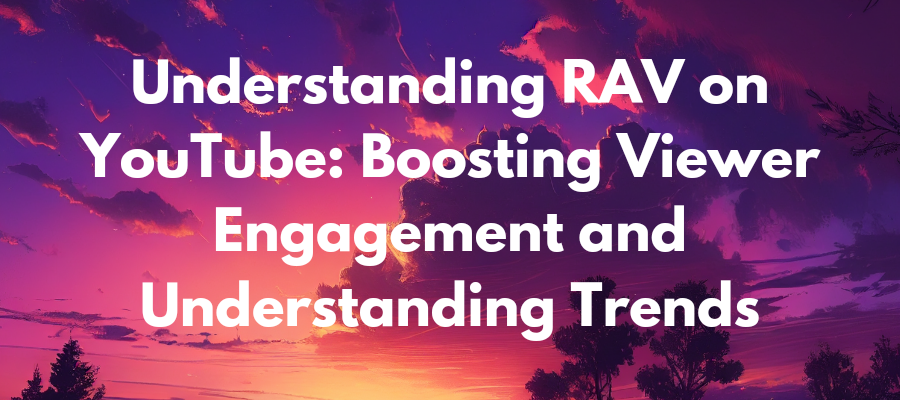
Understanding RAV on YouTube: Boosting Viewer Engagement
In the ever-evolving world of YouTube, understanding the metrics that drive viewer engagement is crucial for content creators aiming to grow their audience. One such vital metric is the Relative Audience Retention Value (RAV). This key performance indicator can significantly influence how your videos are perceived and ranked on the platform. In this blog post, we'll dive into what RAV is, why it matters, and how you can leverage it to boost your channel's performance.
What is Relative Audience Retention Value (RAV)?
Relative Audience Retention Value (RAV) is a metric used by YouTube to measure how well your video keeps viewers engaged compared to other videos of similar length. Unlike absolute audience retention, which simply tracks the percentage of viewers remaining at each moment of your video, RAV provides a comparative analysis. It shows how your video fares against the competition, offering a clearer picture of its engagement power.
You can find RAV in YouTube Analytics under the "Engagement" tab. Here, you'll see a graph that illustrates viewer retention over the duration of your video, with peaks and valleys indicating where viewers are most engaged or dropping off. This visual tool is instrumental in identifying the strengths and weaknesses of your content.
Why is RAV Important?
Understanding RAV is crucial for several reasons:
Content Optimization: By analyzing the RAV graph, you can pinpoint the exact moments where viewer interest wanes. This insight allows you to make informed decisions on how to improve your content. For instance, if you notice a drop-off during a specific segment, you might consider editing that part for clarity or engagement.
Algorithmic Advantage: YouTube's algorithm favors videos with high engagement rates. A video with strong RAV is more likely to be recommended to other users, appear in search results, and feature in the "Suggested Videos" section. This can lead to increased visibility and growth for your channel.
Audience Insights: RAV helps you understand your audience better. By knowing which parts of your video captivate viewers, you can tailor future content to match their preferences and interests, thereby fostering a more loyal and engaged audience.
How to Leverage RAV for Better Engagement
To make the most of RAV, consider the following strategies:
Hook Your Audience Early: The first few seconds of your video are critical. Ensure you grab your viewers' attention immediately with a strong hook. This could be a compelling question, an interesting fact, or a teaser of what's to come.
Maintain a Steady Pace: Keep your content dynamic and engaging throughout. Avoid long, monotonous sections that might cause viewers to lose interest. Use a mix of visuals, storytelling, and pacing to keep the audience invested.
Analyze and Adapt: Regularly review your RAV graphs to understand which parts of your videos perform well and which don’t. Use this data to refine your content creation strategy. Experiment with different formats, lengths, and styles to see what resonates best with your audience.
Engage with Your Audience: Encourage viewers to like, comment, and share your videos. Engagement fosters a sense of community and can lead to higher retention rates. Ask questions, respond to comments, and create content that invites interaction.
Conclusion
Relative Audience Retention Value is a powerful tool in a YouTube creator's arsenal. By understanding and leveraging RAV, you can create more engaging content, optimize viewer retention, and ultimately grow your channel. Remember, the key to success on YouTube lies in continuous learning and adaptation. Keep analyzing your metrics, listening to your audience, and refining your approach. With time and effort, you'll see your engagement rates soar, bringing you closer to your goals as a content creator.